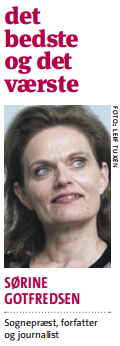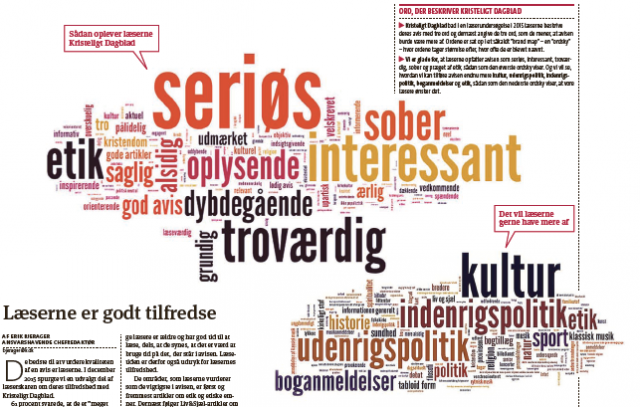A Danish niche newspaper has found a unique way of holding their newspaper and journalists to account to the community they serve, as a way of building trust. Not financially, but editorially. Erik Bjerager, CEO and Editor-in-Chief of Kristeligt Dagblad, spoke to the World Editors Forum about this initiative.
"One problem in journalism is that we look very critically at all other institutions in society, but not so much at ourselves," Bjerager said in an interview. "Do we actually serve the public? And do we live up to our own expectations?"
In order to look at themselves through the eyes of their readers, Kristeligt Dagblad, a small newspaper about life’s big questions, created a rather self-critical, transparent annual report evaluating their own service. It was distributed as an insert to all readers last Friday.
"The distrust in media is unfortunately very high," said Bjerager. This is a global problem, and despite a year-on-year increase in trust in media overall, as measured by the latest Edelman Trust Barometer, trust in journalists has actually declined.
In this context, editorial accountability is a welcomed new phenomenon. But there is no benchmark yet. Unlike in financial accounting, there are no set rules or guidelines, explains Bjerager.
This report is the second attempt of the newspaper to hold itself to account, and this is how they did it:
The best and worst, according to well-known Danish people
Why not ask politicians, journalists, business leaders, publishers and professors what they think about the newspaper? Sørine Gotfredsen, Parish priest, writer and journalist, is one of the survey's notable respondents. Here's what she said:

- What is the best thing about Kristeligt Dagblads? "It is a newspaper that has the courage and focus to rise above the tyranny that exists in the media; meaning that all publications try to be the first with the same, wide news. It has its own agenda and its own debate and I think that makes the newspaper doing so well."
- What is the worst thing about Kristeligt Dagblad? "The downside of the focus on ethical and existential angles is that there can be a whining sound in some of the newspaper's stories. There are articles where people are allowed to cry out. At times, there is too much revelling in human weakness and fragility before it ends with a smile through tears. I miss a more outspoken and reckless approach. Straighten your back and move on!"

Publish readers’ survey
Kristeligt Dagblad regularly holds surveys to check reader satisfaction. Normally, the results are used internally to further develop the newspaper. But for the editorial report, they have published them in the form of a word cloud, indicating a) the words used to describe how people view the newspaper, in descending order of importance: serious, interesting, ethical, sober, trustworthy; and b) what readers would like to see more of: culture, domestic politics, foreign politics, book reviews, sports.
Readers’ input
The report provides statistics on the newspaper’s interactivity with its audience. The newspaper received 1,280 letters from readers, and published 745; received 2,605 long commentaries, and published 982; received 903 small essays, and published 302.
Encourage complaints
It should be easy to complain about the newspaper's journalism, the report states, and provides an email address for that purpose. It further explains how to take a case to the Danish Press Council in the case of an unsatisfactory response.
Number of errors
The number of errors journalists made are diminishing, but slowly, the report states; from 108 in 2014 to 107 corrections last year.
This post originally appeared on the World Editors Forum blog and is republished on IJNet with permission. Ingrid Cobben is Media Editor at the World Association of Newspapers and News Publishers (WAN-IFRA).
Main image CC-licensed by Flickr via Hamed Saber.
Images of Sørine Gotfredsen and word cloud are screenshots from Kristeligt Dagblad's annual report.

